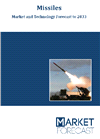Today, the Defense Innovation Unit (DIU) announced that Anduril has been selected to deliver collaborative mission autonomy software that will coordinate thousands of uncrewed and autonomous assets across the Joint Force in communications and GNSS denied environments. Under DIU’s Autonomous Collaborative Teaming (ACT) contract, Anduril’s Lattice for Mission Autonomy™ software platform will enable multi-domain autonomous assets acquired through the Department’s Replicator initiative to execute collaborative autonomous tasks, unlocking new concepts of employment that enable the Joint Force to regain affordable mass with teams of low-cost autonomous systems.
The Department of Defense’s Replicator initiative has dramatically accelerated the development, production, acquisition, and fielding of affordable, attritable autonomous systems, including loitering munitions, autonomous air and surface vehicles, counter-UAS systems, and more. To employ those systems effectively, however, the Department needs a mission autonomy solution that can effectively coordinate thousands of uncrewed assets in a shared environment, including environments where navigation and communications are disrupted or denied.
Working in partnership with a variety of mission partners from both government and industry, Lattice for Mission Autonomy will support Replicator systems across domains, enabling warfighters to operate intelligent, collaborative teams of autonomous systems. Anduril will deploy Lattice for Mission Autonomy’s open architecture to enable the rapid integration of large numbers of disparate autonomous systems - including both Anduril and third-party platforms - into a common mission autonomy software baseline. Once integrated into Lattice™, an operator will be able to unify a group of systems’ sensors, control systems, payloads, and weapons, enabling the operator to then task that team to conduct a variety of collaborative missions such as area search, target tracking and interception, signal relay, simultaneous arrival, strike, and more.

Market forecast by Regions, Types, Guidance systems, and Launch Platforms. Country Analysis, Market and Technology Overview, Critical Raw Materials, Opportunity Analysis, and Leading Company Profiles
Download free sample pages More informationMission autonomy represents a major shift in defense capability from a manpower-intensive, hardware-defined military, to one that is software-centric and defined by affordable mass. By composing systems from across the Services into collaborative teams, Lattice will help establish the mission autonomy baseline for the entire Joint Force, dramatically extending reach, capabilities, and situational awareness. And, by providing warfighters with a mission engine that automates critical command and control functions, Lattice will provide distributed operators with a scalable battle network in line with modern Joint warfighting concepts.
From counter-UAS to air combat, Anduril has been continuously refining and scaling Lattice across real-world deployments, exercises, and test events since the company’s founding in 2017. At the U.S. Pacific Fleet’s Integrated Battle Problem 24.1 exercise, for example, Lattice’s open APIs and software development kit was used for rapid integration of more than a dozen different uncrewed systems and data feeds, enabling distributed operators to seamlessly command and control teams of heterogeneous systems across domains. At Desert Guardian 1.0, Anduril rapidly integrated more than ten different sensor teams into Lattice, merging real-time data sharing across diverse sensor systems to provide warfighters with comprehensive situational awareness of airborne threats. And at EDGE23, Lattice for Mission Autonomy enabled a single soldier to manage an integrated team of multiple uncrewed aircraft to locate, identify, and destroy a surface-to-air missile site.
Deploying Lattice for Mission Autonomy in support of DIU ACT is the latest example of how Anduril is accelerating the employment of software-defined, hardware-enabled capabilities across U.S. and allied forces. To date, Anduril has integrated Lattice with hundreds of assets across hundreds of geographically distributed locations. By fusing modern software practices with deep expertise in autonomous systems development and deployment, Anduril has repeatedly demonstrated its ability to deliver intelligent, autonomous, and software-defined capabilities on a timeline and scale that matters.